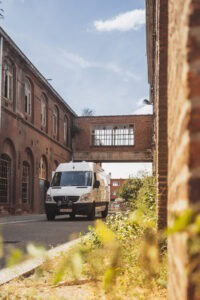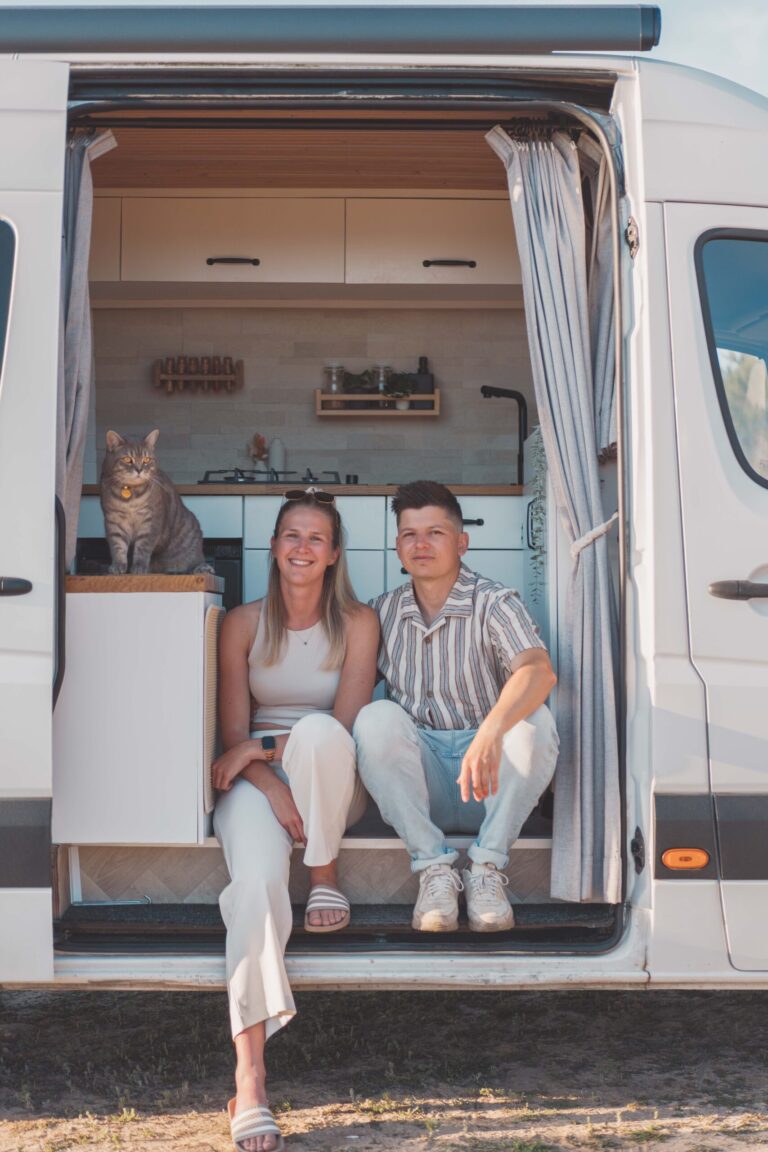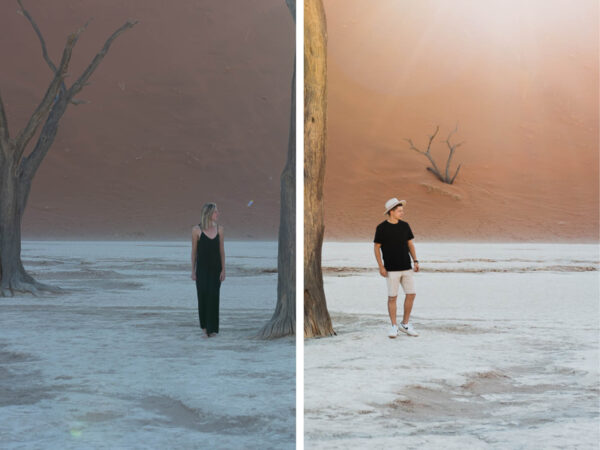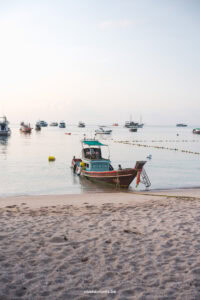Overview
This post may contain affiliate links, which means we may receive a small commission, at no extra cost to you, if you make a purchase through our link.
This is a free way to support us and allows us to continue creating even more inspiring travel guides. Thank you for supporting the love we put into Coordinotes!
Safari Parks in South Africa: Self drive or Guided Safari
Self-drive vs Guided Jeep Safari
You can visit many game parks in South Africa on a self-drive or during a guided jeep safari. It is hard to say which is the best way because they both have their pros and cons. Below, we have made a small comparison to show that you should consider both ways to go game viewing. We highly recommend that you try both and just alternate between them. In this blog post, you find our top 3 parks that we liked exploring on a self-drive safari.
Self-drive
- You can decide your own pace, itinerary, and how much time you want to spend at specific sightings.
- It’s more budget-friendly, as you only have to pay the entrance fee (and fuel).
- You have the vehicle to yourself or your group, which gives a more intimate experience with wildlife.
- You can decide yourself how long you want your safari to be (within the opening hours).
Guided Jeep Safari
- A guide can share his knowledge and tell you more about the park and the animals.
- You’re in the hands of a professional who knows how to handle wildlife encounters and difficult situations.
- You don’t have to worry about navigation and can fully focus on spotting animals instead of the road.
- Some guided game drives offer access to areas not open to the public.
- Depending on your own vehicle, you might sit higher in a safari jeep, making it easier to spot animals.
Did you know that “game” in the context of game viewing and game reserves refers to the wild animals that are the primary attractions for tourists and are conserved in these protected areas for the purpose of tourism, wildlife conservation and ecological research.

Book your transport in South Africa now!
1. Addo Elephant Park
33° 28′ S, 25° 44′ E
Addo Elephant National Park is the third largest national park in South Africa. It is located in the Sundays River region of the Eastern Cape. Let us tell you a little more about the history of this park.
In the early centuries, there were big herds of wild animals roaming the Addo region, while different clans also lived in the area. These clans hunted the animals and killed almost all great herds of elephants and other animal species over the 1700s and 1800s. In the late 1800s, farmers came to the Addo area too, and came into conflict with the remaining elephant population for water and crops.
In 1919, the farmers asked the government to exterminate the elephants. Between 1919 and 1920, 114 elephants were killed, but 11 elephants knew to survive. In 1931, the original elephant section of the park was proclaimed to save the 11 remaining elephants in the area.
Today, the park is home to over 600 elephants, together with many other animals, including the big five, but also giraffes, zebras, warthogs, a variety of antelope species, and the unique flightless dung beetle, which you almost only find in Addo. Despite being the third largest national park, the main game area has ‘only’ 120km of roads. You can easily see the entire park in one day if you start early.


Note: Addo Elephant Park is home to the protected dung beetle. In fact, it is even almost the only place where you’ll find them. You have to be careful not to drive them over on the road. They often sit on elephant poop or you can see them rolling away a ball of poop, which is super cute. but avoid driving over elephant poop!
Our opinion about Addo Elephant Park
- It is not very big, so you can easily see the whole park in one day.
- The ‘road network’ is quite simple, so you can map out a simple route and easily navigate here.
- Even if the chance is small, it is still possible to see the big 5 here.
- The dung beetles rolling away a poop ball are super cute!
- Lots and loooots of elephants here, even baby ones!
- The roads in Addo are often surrounded by dense vegetation, which can limit visibility and make spotting wildlife more difficult.
Practical
R376 per adult, per day
R188 per child, per day
Daily: 07:00 AM to 07:00 PM
Gates to the game areas open and close according to season.
Always check the current times on the official website.
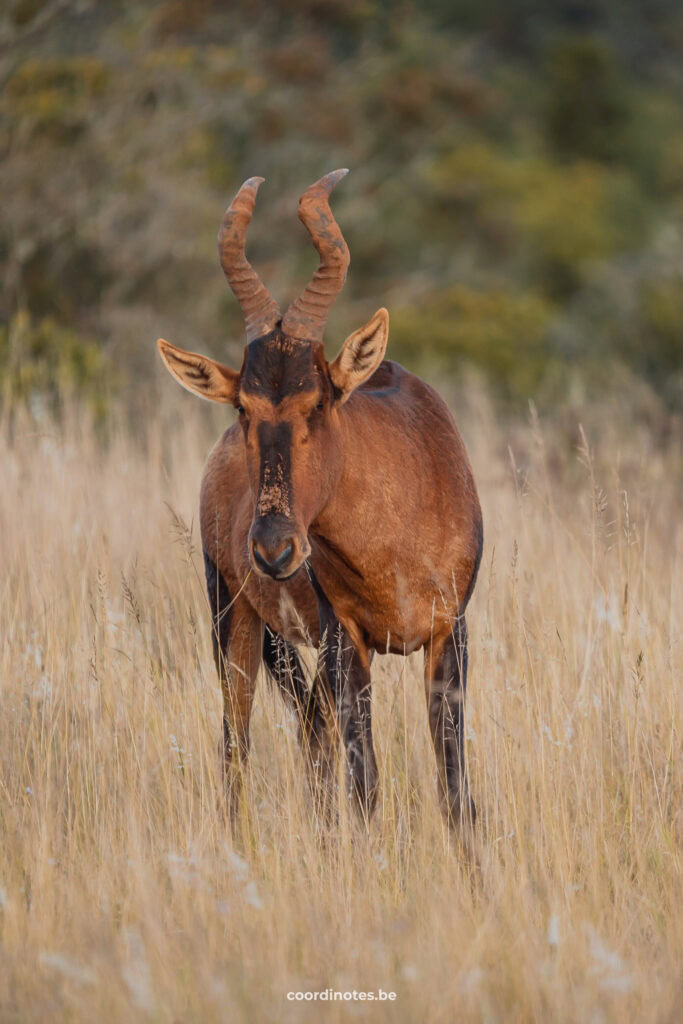
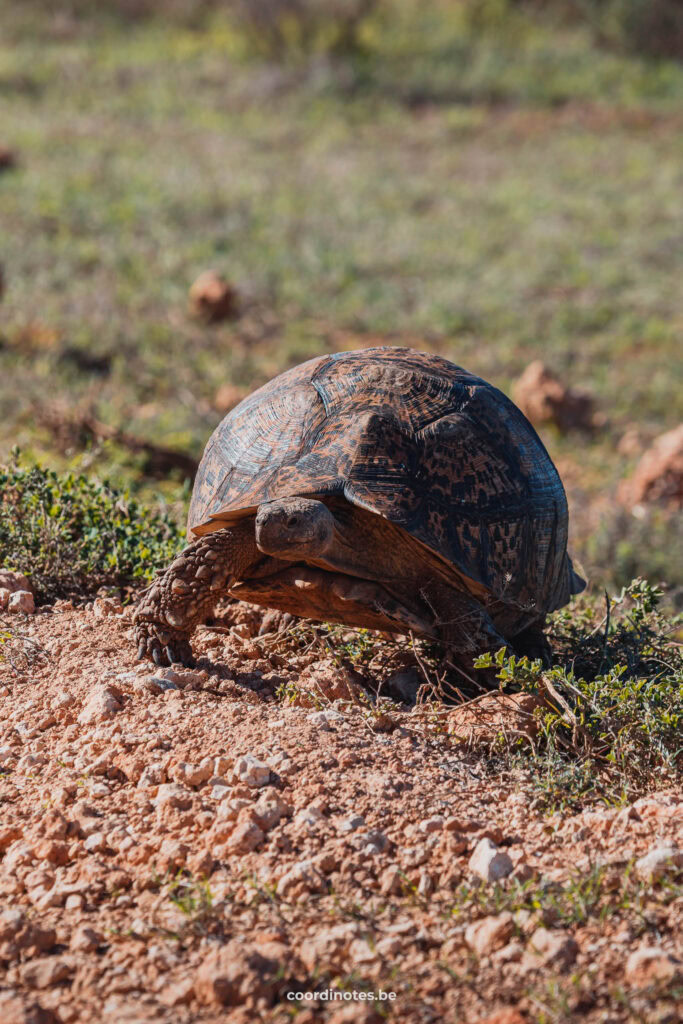
Must Read
2. Kruger National Park
23° 55′ S, 31° 30′ E
Kruger National Park is one of the most iconic wildlife reserves in Africa and is world-famous for its African safaris. It is located in northeastern South Africa and is, with its 20.000 square kilometers, one of the largest game reserves on the African continent. It is about 360 kilometers long and extends from the Limpopo River in the north to the Crocodile River in the south.
The park was established in 1898 and was named after Paul Kruger, the former President of the South African Republic. From its inception to this day, the park has always played an important role in wildlife conservation. More recently, the park became part of the Great Limpopo Transfrontier Park, a conservation area that connects parks in South Africa, Mozambique, and Zimbabwe. It is involved in various conservation efforts to protect endangered species, combat poaching, and preserve natural ecosystems.
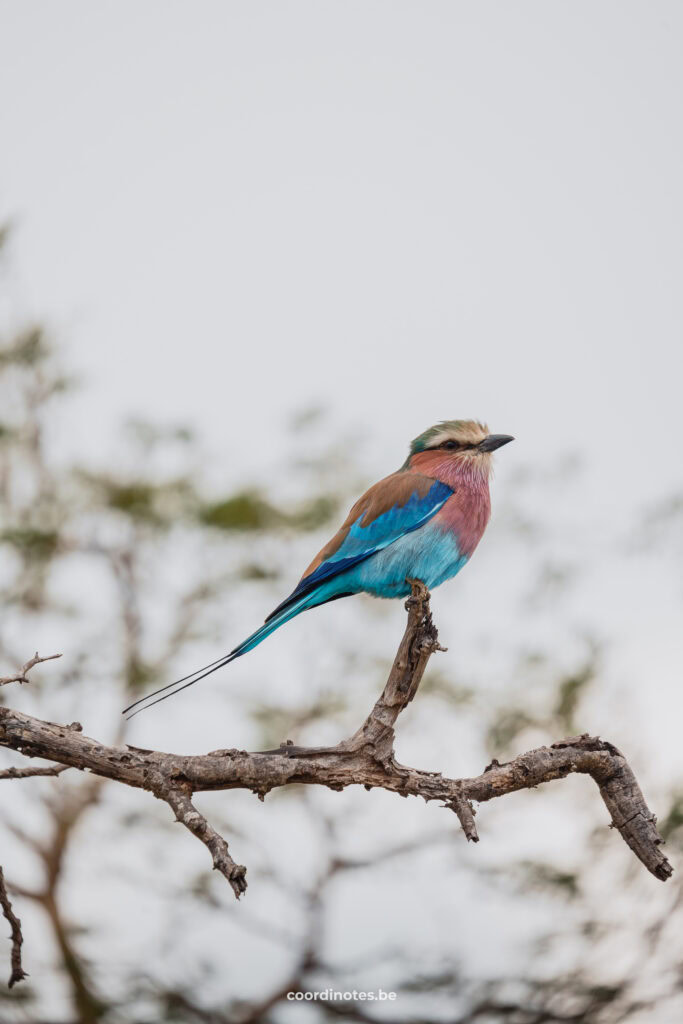

Kruger National Park is known for its incredible wildlife and biodiversity. It is home to a big variety of wildlife, including the ‘Big Five’, but also many other mammals, birds, reptiles, and plant species. Besides the variety in animals living in Kruger, the park also has a very varied landscape from dense, riverine forests to open savannas and grasslands. There are also rugged mountains and seasonal rivers. This variety of landscapes ensures that all these different species of animals can live here.
Kruger National Park consists of two parts. The biggest part of Kruger is owned by the government organization SANparks and is referred to as Kruger Park. Several other parts are privately owned, which are all together referred to as Greater Kruger. It is only the main Kruger Park that you can explore on a self-drive. If you want to explore Greater Kruger, you have to book a guided jeep safari and/or stay in one of the safari lodges in the private game reserves.
Note: The total size of Kruger National Park is 20,000 m2, which is approximately the same size as a country such as Slovenia.
Our opinion about Kruger National Park
- There are so many animals in Kruger National Park that you can be sure to see plenty of interesting animals here, including the big five.
- It is huge, so you can spend multiple days exploring this park.
- In most places, there is not much dense vegetation in Kruger, which ensures that visibility is very good here.
- It is the most famous national park in South Africa, so it can sometimes be quite busy. This means that there is always a good chance that several cars will be stationary when there’s an animal is visible, blocking your view.
Practical
R460 per adult, per day
R230 per child, per day
Daily: 05:30 AM to 06:30 PM
Gates to the game areas open and close according to season.
Always check the current times on the official website.
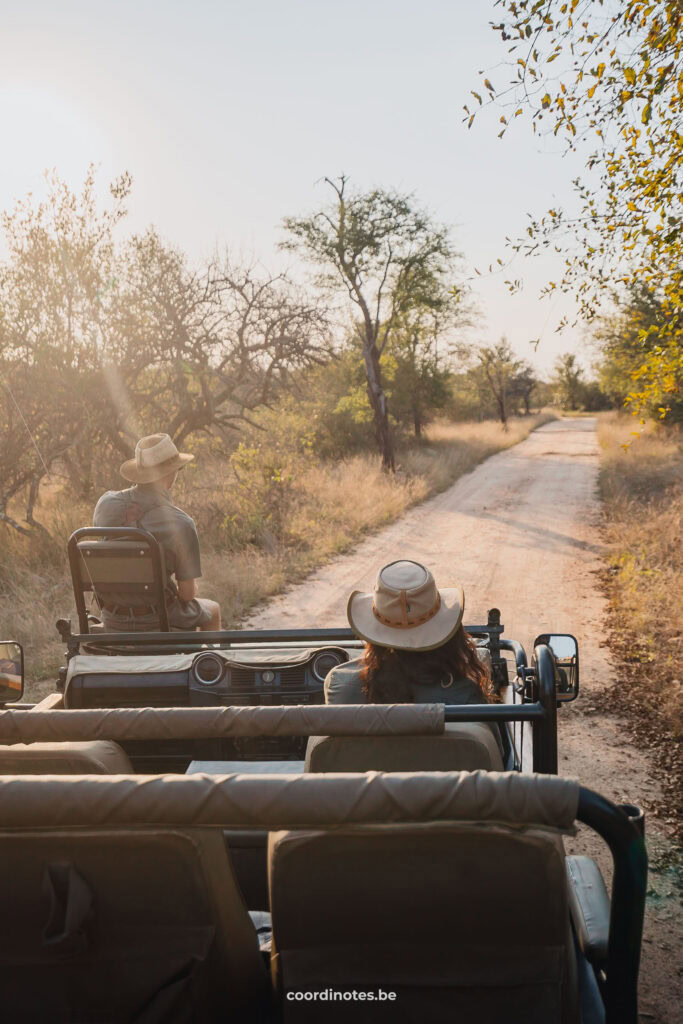
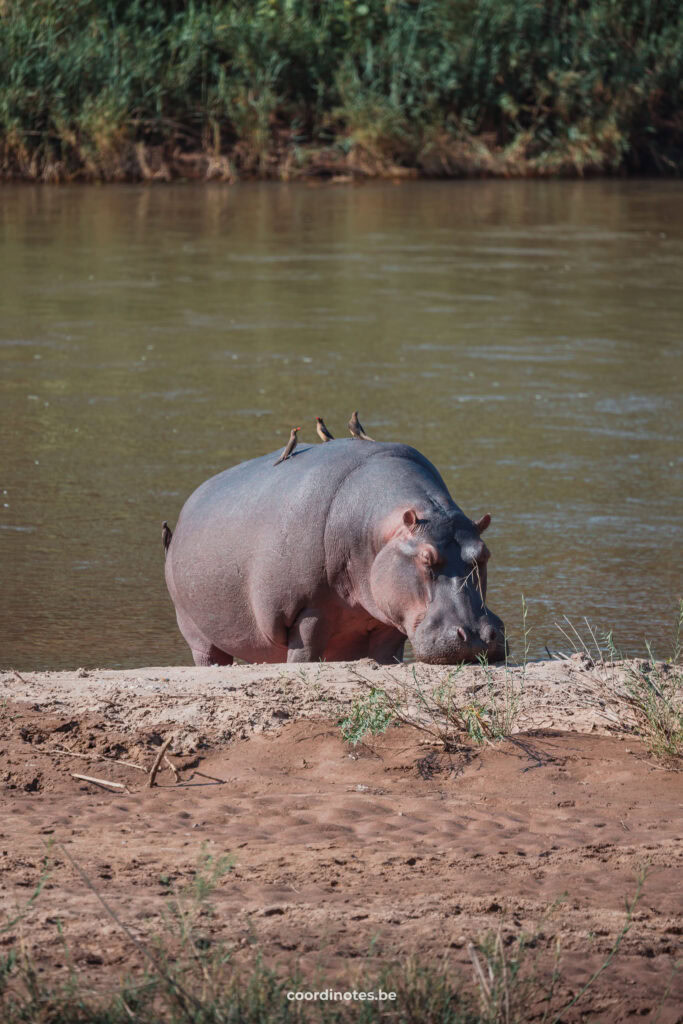
No time to read now?
Save this post on Pinterest!
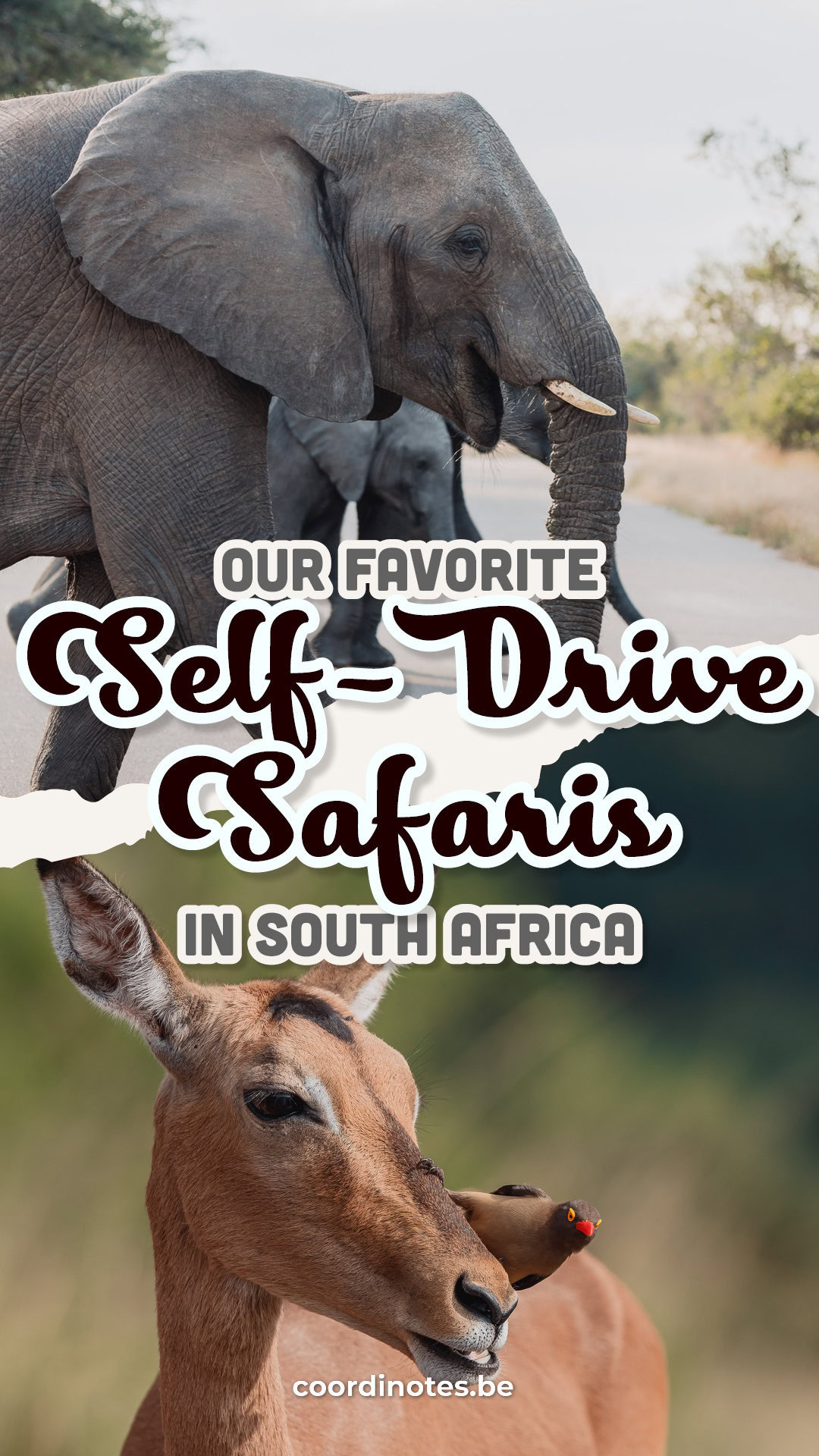
3. Hluhluwe imfolozi Park
24° 50' S, 30° 50' E
Hluhluwe-Imfolozi Park, is our absolute favorite safari park in South Africa! It is one of South Africa’s oldest and most renowned wildlife reserves. It is known for its conservation efforts and significant role in saving the white rhinoceros from extinction due to hunting. There were only about 20 rhinos left when the specialists of the Game Capture Unit protected the rhino from extinction with their “Operation White Rhino”. There are now more than 1,400 white and 300 black rhinos. If you are lucky, you can spot not only the rhinos but all the big five animals and many other big and smaller wildlife here.
Previously, Hluhluwe and Imfolozi game reserves were two separate parks. Now, the two parks are connected by the Corridor Reserve and are seen as one reserve, making it one of South Africa’s largest parks.
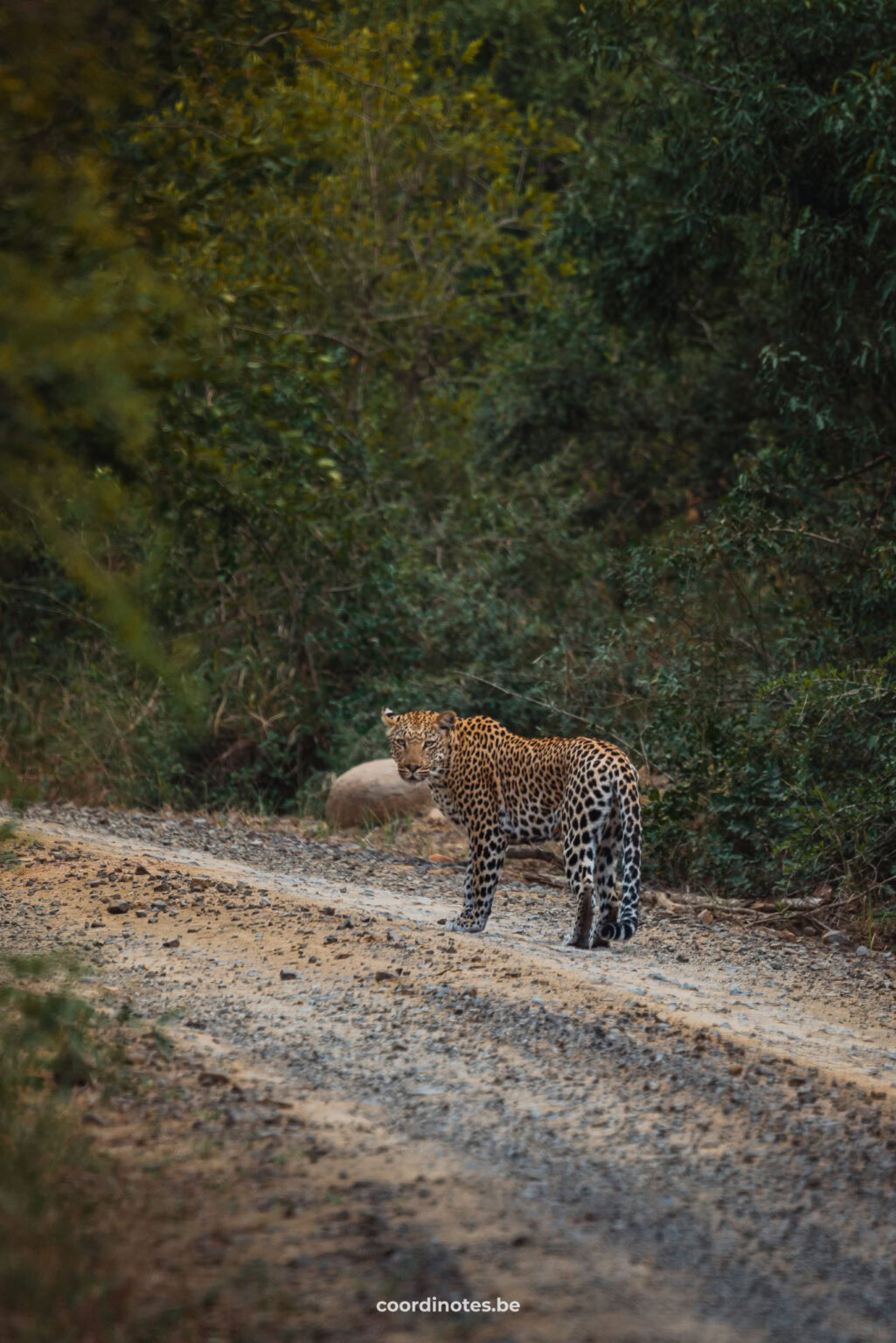

Our opinion about Hluhluwe Imfolozi Park
- This park is at least as beautiful as Kruger but way less busy. Locals often recommend Hluhluwe Imfolozi too, instead of Kruger due to the crowds.
- Your entrance and conservation fees include both sections of the park (Hluhluwe and Imfolozi) and there is no gate or barrier dividing the two, so you can see two parks for the price of one.
- It is a huge park, but not impossible to explore all of it (in 2 days).
- In most game reserves, the rhinos are dehorned to prevent poaching. In Hluhluwe Imfolozi, you can still admire these interesting animals in all their glory with their horns. It is in general the best park to see rhinos.
- We may be a little biased because we saw our first and only leopard here.
Practical
R240 per adult, per day
R120 per child, per day
Summer
Daily: 5:00 AM to 6:00 PM
Winter
Daily: 6:00 AM to 5:00 PM

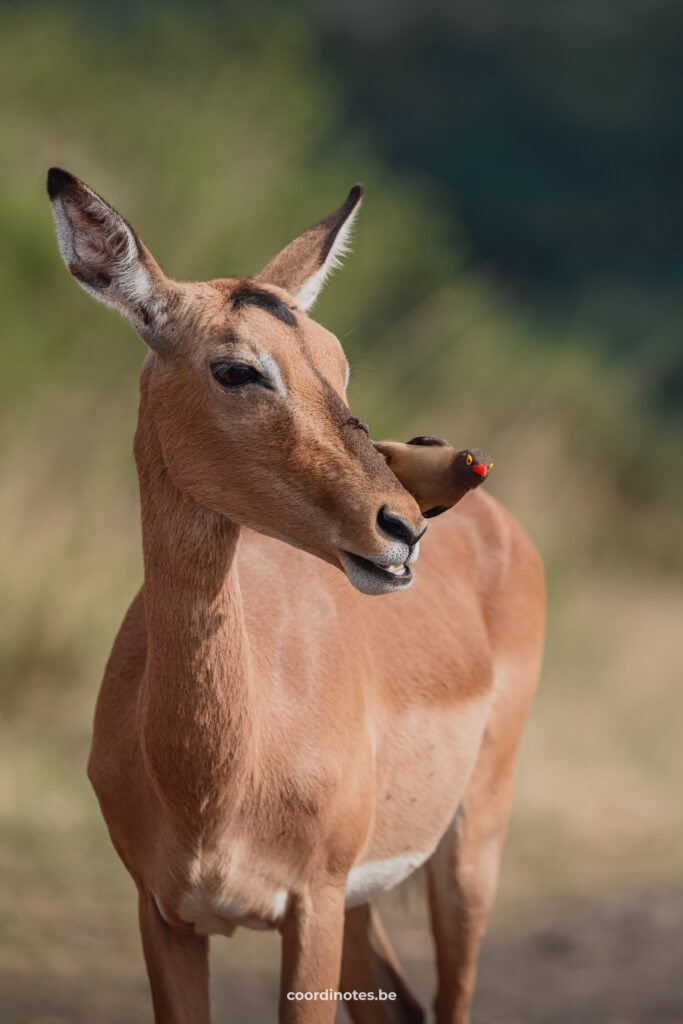
Tips for a self-drive safari
Binoculars are a must
Not all animals in the game reserves are right next to the road. That's why binoculars are a must. This also allows you to always keep a safe distance and view animals in more detail.
Start Early
Arriving at the park when it opens, allows you to explore a park before it becomes more crowded and it gives you plenty of time to explore. Animals are also more active in the morning and not yet 'disturbed' by other visitors.
Stick to the speed limit
Game reserves always have a speed limit. Please, stick to this limit. Not only to protect the animals, but also so that you can spot animals much more easily.
Know the gate times and plan properly
Familiarise yourself with the gates' opening times and plan your route accordingly. Take the speed limit into account and allow extra time for remarkable animal sightings. Make sure you always keep an eye on the time. You risk a very high fine if you are not at the gate before closing time.
Keep a safe distance from wildlife
Wild animals can behave and react very unpredictably. Always keep a safe distance between you and the wildlife to avoid potentially dangerous situations. Also, refrain from hanging out your window!
Never leave your car
Never, ever, ever leave your car in a park, except in places where it is clearly indicated that it is allowed. This is not only for your own safety, but also for the safety of the animals.
Bring Water and Snacks
Bring enough food and drinks for on the road. It might take a while before you come across a rest camp. It is therefore always useful to have something to eat or drink for the little hunger or thirst. In many parks, you also find picnic areas where you can enjoy a little snack in a beautiful landscape. Always be aware of your surroundings, because animals can come here too.
Provide a map
It is always useful to have a map of the park you want to explore, either physical or downloaded on your phone. With such a map, you can easily navigate through a park, plan your route and find facilities, such as restaurants, shops, rest camps, gas stations or toilets during your safari.
Fuel up before entering the park
In some parks you find at least one petrol station but we advice you to fuel up before you enter the gate. This way you don't have to worry about an empty gas tank during your safari.
Bring your passport and driving license
Normally you should always have your passport and driving license with you anyway, but we would like to explicitly point this out. To enter the park, you must show your passport and sometimes driving license. This is mainly to prevent poachers. This way you avoid having to turn back at the gate and losing time to get your passport and/or driving license.

Win-Win for everyone
Did you know that, if you buy or book something through our links, we receive a small commission?
However, you still pay the same and therefore have no extra costs! So a win-win for everyone. This way, we can continue to add even more travel inspiration and tips to this blog for your next adventure. Thanks a lot!
Thank you for visiting our blog
We hope you find our free travel guides and tips useful. If you want, you can support us virtually by ‘buying us a coffee‘.
Every contribution, no matter how small, is greatly appreciated and will help us continue to share our passion with you and grow this blog.
Win-Win for everyone
Did you know that, if you buy or book something through our links, we receive a small commission?
However, you still pay the same and therefore have no extra costs! So a win-win for everyone. This way, we can continue to add even more travel inspiration and tips to this blog for your next adventure. Thanks a lot!


